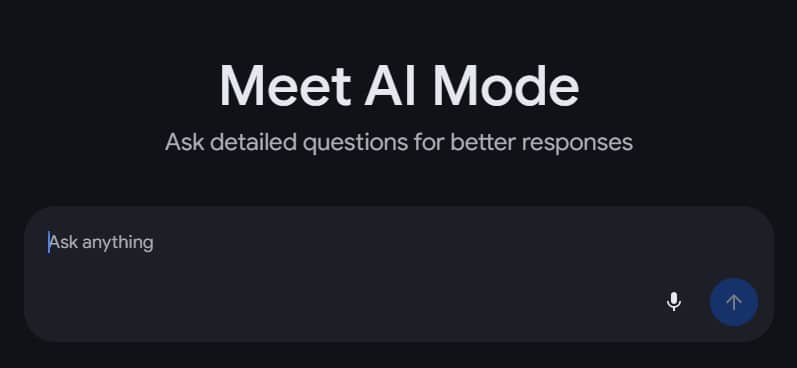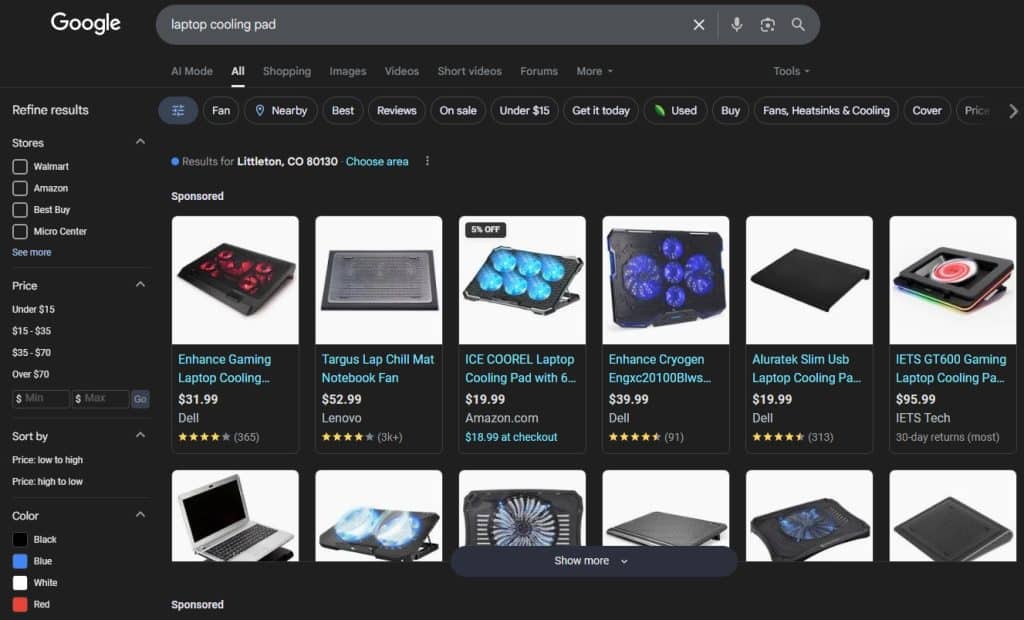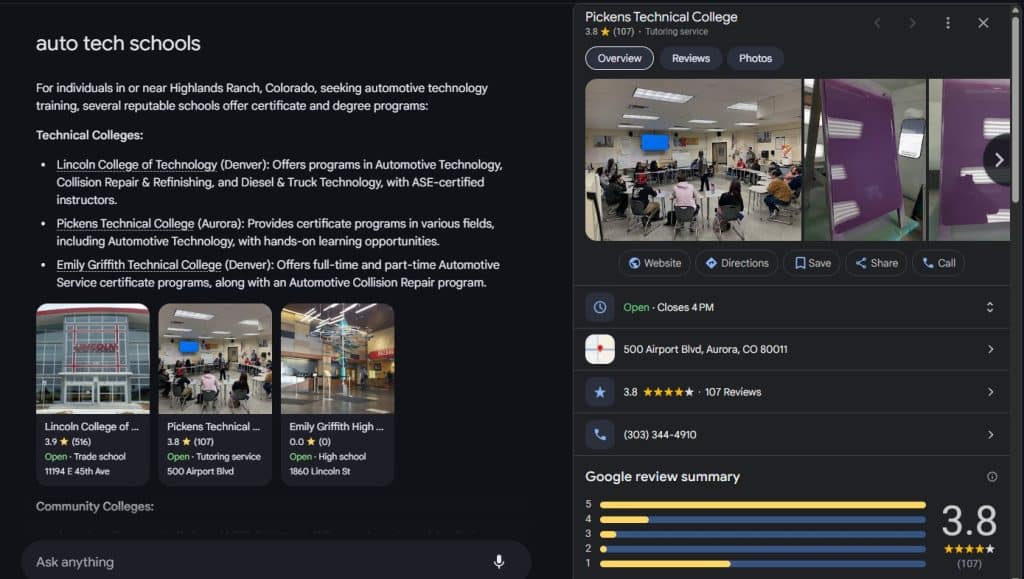Last Updated on June 2, 2025 by Mike
 On May 20, Google unveiled significant enhancements to its AI-powered Search during the annual I/O conference, marking an evolution from the earlier “AI Overviews.” These advancements include deeper reasoning, multimodal capabilities, personalized responses, and real-time interactivity through features like Deep Search, Search Live, and Project Mariner.
On May 20, Google unveiled significant enhancements to its AI-powered Search during the annual I/O conference, marking an evolution from the earlier “AI Overviews.” These advancements include deeper reasoning, multimodal capabilities, personalized responses, and real-time interactivity through features like Deep Search, Search Live, and Project Mariner.
Now fully accessible without a Labs sign-up in the U.S., Google AI Mode represents Google’s most sophisticated AI-driven search experience yet.
This guide explores how Google AI Mode changes SEO strategies, details the benefits and limitations of this powerful tool, and discusses how your business can optimize for maximum visibility.
What Exactly Is Google AI Mode?
Google AI Mode builds upon the original AI Overviews but offers a more interactive and conversational search experience. Users can:
- Engage in ongoing conversations.
- Utilize camera-based search via Project Astra.
- Generate real-time graphs and visualizations.
- Benefit from dynamic responses tailored by Google’s Gemini 2.5 model and real-time reasoning techniques.
Unlike static search summaries, AI Mode interacts dynamically with users, answering follow-up questions, and enhancing the overall search journey.
How Google AI Mode Works
AI Mode operates by tapping into Google’s extensive indexing across various platforms like web pages, YouTube, Google Business Profiles, and more.
Here’s where it gets more interesting: Upon receiving a query, Google:
Step 1: Initiates parallel searches (query fan-out). You’ll see this as Google “Kicking off” related searches to your query. So if your base search is “best fiction books 2025” Google may browse its index for related searches like “best books 2025”, “best science fiction books 2025”, etc.

Step 2: Aggregates relevant information from multiple sources. Google essentially reads through the content on the pages and picks up information of interest. You’ll see this as “Looking at # sites…”
Step 3: Synthesizes these insights using the Gemini model to generate comprehensive responses.
AI Mode prominently references websites ranking highly in traditional Google search results, placing significant emphasis on traditional SEO practices such as indexing health, content quality, and backlink strength.
SEO Best Practices for Google AI Mode
Traditional SEO Fundamentals Remain Critical
The reality is that there is not a secret new tactic or trick that gets you into AI results that is different from traditional SEO. Because AI Mode heavily relies on Google’s indexed content, traditional SEO practices still form the backbone of visibility:
- Ensure your website is fully indexed without errors.
- Maintain robust content relevant to your audience’s search intent.
- Focus on authoritative backlinks and citations to enhance credibility.
Enhanced Query Understanding
Google AI Mode emphasizes better understanding and addressing user intent:
- Create comprehensive, clearly-written content that answers commonly asked questions.
- Employ structured data to facilitate Google’s understanding of your content.
- Optimize for long-tail queries, providing in-depth answers that directly address nuanced user questions.
Key Benefits and Drawbacks of Google AI Mode
Will users start using AI Mode over traditional search? Time will tell, but here are the biggest advantages of using AI Mode over traditional search:
Benefit: Conversational Mode
Google’s AI mode aims to create a more engaging and satisfying search experience by consolidating what was previously a multi-step process into just one interaction. In the past, if you wanted to change your car’s cabin air filter, you might Google “how to change cabin air filter,” read a few articles, and then separately look up compatibility details before making a purchase.
Now, Google AI mode anticipates your questions and answers them proactively—even those you haven’t thought to ask yet, like “What types of cabin air filters exist?” “Which filter fits my car?” or “How often should I change it?” Additionally, it might suggest related questions or guide you toward your next steps, making your search journey smoother and more intuitive.
Benefit: Handling Long-Tail Queries
Traditional search isn’t ideal for handling detailed or complex questions, known as long-tail queries. Google’s AI mode steps in here by offering richer, detailed answers.
For instance, if you want gardening advice tailored specifically to your backyard conditions, you’d typically head to a local garden center to speak with an expert familiar with your area’s soil and climate. With Google AI, it feels like having that expert available anytime online—answering detailed queries clearly, even addressing questions you might not know to ask yet.
Drawbacks: Accuracy
Google explicitly acknowledges a major limitation—accuracy—with a disclaimer stating, “AI responses may include mistakes.”
This issue is significant and shouldn’t be overlooked. Using the backyard gardening example again, imagine relying on Google’s plant recommendations, investing considerable money, and later discovering the advice was factually wrong or better suited for someone in a different climate. You might wish Google had simply admitted uncertainty or requested more specifics from your query.
Accuracy problems are not new; after all, we’ve long joked, “I saw it online, so it must be true!” Google is aware of this challenge, and while it continues working to improve accuracy, some questions inherently require nuanced, “it depends” answers, which the AI might oversimplify.
Drawback: Not Always Delivering Users Directly to the Best Page
Google often leans toward showcasing established brands with strong online authority in its AI answers. While this can be helpful, it doesn’t always guide users directly to the best landing pages for their specific needs.
Product Example: Laptop Cooling Pad
If you search “Laptop Cooling Pad” in AI mode, Google provides detailed explanations about cooling pads—types, benefits, and functionality—rather than offering immediate purchase options. They treat the user as if they want to learn about laptop cooling pads – not buy one. Even the site links on the right-side are information focused:

This couldn’t be more different using a Google traditional search where Google assumes you are looking to make a purchase. It’s a mix of sponsored results, the organic listings contain a few informational articles, but mostly product landing pages:

This issue affects quick-purchase decisions, especially for lower-priced items where users don’t want to spend a significant amount of time researching and just want to make a purchase and move on with their lives. Users are likely to stick with traditional search until Google AI provides a less informational content for transactional searches and offers a better path to make purchases.
Service Example: Auto Tech Schools
If I wanted to become an auto technician and enroll in a school nearby, I might start by typing “auto tech schools near me” into Google AI. Doing this provides me with a list of schools and their corresponding links, sourced from Google Maps results, typically directing me to the school’s homepage.

From there, however, the process becomes cumbersome. I need to navigate from the homepage to the specific program page on the school’s website, hoping they actually offer an automotive technician program. For instance, when I looked into Pickens Technical College, finding detailed information about their auto tech program was surprisingly difficult.

It would have been much more convenient if Google AI could have directly linked me to the relevant program page:
This basic functionality—quickly and intuitively directing users to the exact information they seek—is fundamental for any effective search engine. Until Google AI integrates this capability, I don’t anticipate a significant shift away from traditional Google searches toward AI-driven modes.
Drawback: Lack of Original User Insights
Google AI aggregates information from multiple sources but doesn’t offer original insights or firsthand experiences. Users may wonder if recommendations from a single, trusted source outweigh aggregated, conflicting advice.
For instance, gardening recommendations might be sourced from the New York Times or a local gardening blog specializing in your area’s specifics. The local blog could offer deeper, more accurate insights, yet Google might prioritize the bigger brand.
Ultimately, Google AI is helpful but shouldn’t be your only source for decisions requiring precise, localized, or expert insights.
Strategic Considerations for Marketers
1. Content Optimization
- Prioritize detailed informational content, particularly for common and nuanced queries.
- Structure your content to clearly address user questions comprehensively.
- Integrate structured data and schema markup to enhance content discoverability.
2. Branding and Backlinks
- Strengthen your backlink profile and brand visibility to ensure inclusion in AI-generated summaries.
- Leverage authority-building tactics such as strategic guest posting and citation building.
3. Future-proofing Your Strategy
- Monitor how Google integrates advertising within AI Mode to prepare for potential shifts in digital advertising strategies.
- Keep track of user engagement and conversion data, comparing AI Mode versus traditional search outcomes.
Questions to Consider Moving Forward:
- How will Google incorporate advertising into AI mode, and how will current Google Ads users adapt? Will advertisers have the option to opt in, or be pushed to advertise on Google AI mode whether they want to or not?
- Will AI mode and traditional web results remain separate, or will they merge into a unified experience? In other words, will more traditional web links be brought into Google AI mode, the other way around, or will they become distinct Google products?
Conclusion
Google rose to dominance in the early 2000s thanks to its superior algorithm (PageRank) delivering precise and relevant search results. Google AI seeks to continue this legacy but aims to deliver answers more comprehensively and conversationally, enhancing the overall search experience.
Google’s introduction of AI Mode represents a significant step forward in making search results more interactive, comprehensive, and user-friendly. While the core principles of effective SEO remain consistent—quality content, indexing health, and authoritative backlinks—the nuances introduced by AI Mode require marketers to deepen their focus on user intent, long-tail queries, and structured, conversational content.
Companies prepared to adapt to this evolving landscape will likely enjoy enhanced visibility and increased user engagement in Google’s new AI-driven search ecosystem. However, maintaining a cautious awareness of its limitations—especially accuracy and intent misalignment—will be crucial to leveraging Google AI Mode effectively in your SEO strategy.

Leave a Reply